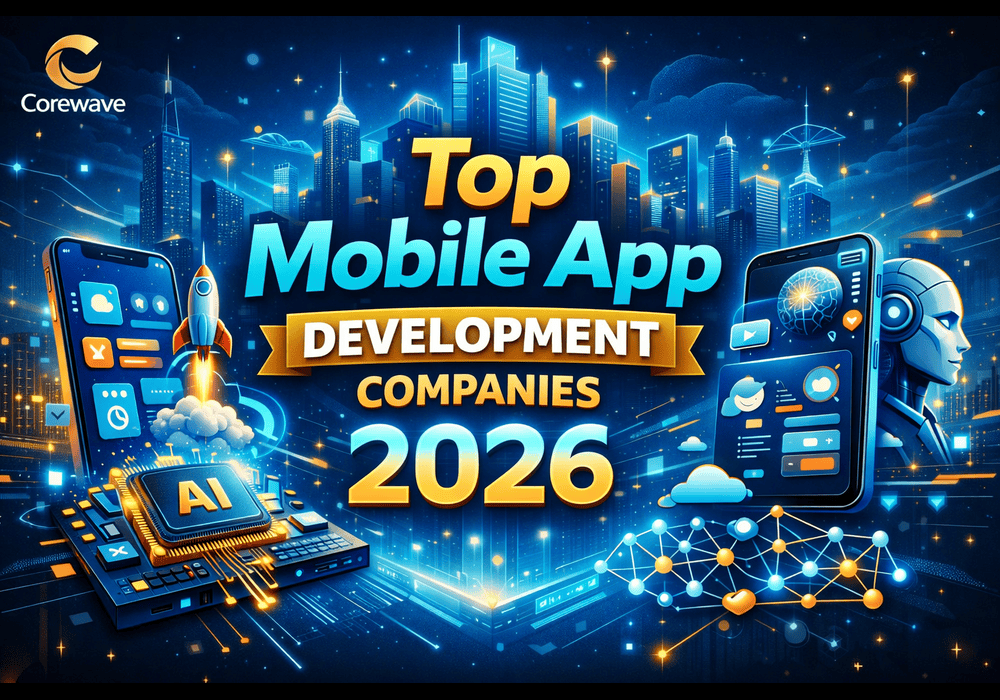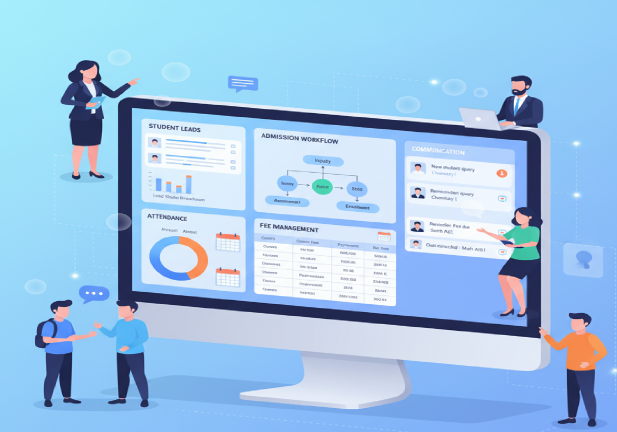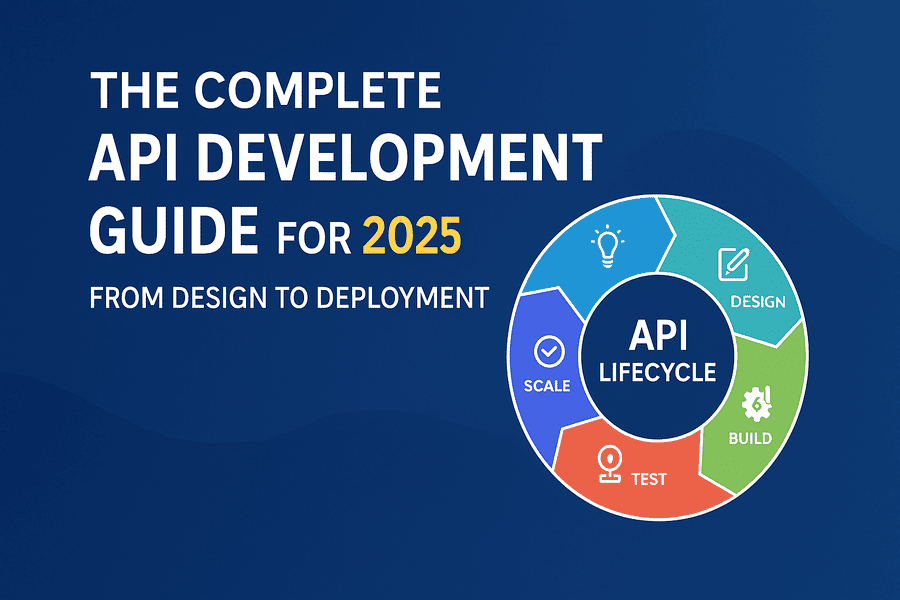Introduction: Why API Development Is the Backbone of Digital Transformation
In the digital-first era of 2025, Application Programming Interfaces (APIs) have moved from being simple connectors to becoming the engine of innovation. APIs enable apps, platforms, and businesses to exchange data, integrate systems, and deliver seamless user experiences. Whether you are an enterprise looking to automate workflows, a startup entering the Mobile App Development Company landscape, or a business innovating with AI App Development, APIs play a central role.
According to a 2025 Gartner report, more than 80% of enterprises rely on APIs for at least one critical function. APIs are no longer a “nice-to-have”; they are mission-critical assets.
This guide will take you through the complete journey of API development — from planning and building to testing, deploying, and scaling like a pro. Along the way, we’ll explore tools, frameworks, best practices, costs, and future trends shaping API development in 2025.
What Is API Development?
API development refers to the process of designing, building, and deploying APIs that enable communication between two or more software applications. Simply put, APIs act as messengers — they deliver requests from one system and return responses from another.
Examples in everyday life:
- Ordering food on Swiggy ? API connects app to restaurant’s inventory.
- Booking a cab on Uber ? API communicates with Google Maps.
- Paying via PayPal ? API securely processes transactions.
In 2025, API development is more strategic than ever. Businesses rely on APIs for:
- Scalability: Expanding services without reinventing the wheel.
- Security: Protecting sensitive customer data.
- Innovation: Adding AI, IoT, or blockchain features.
Types of APIs in 2025
| API Type | Description | Example Use Cases |
|---|---|---|
| Open APIs | Publicly available for developers. | Google Maps API, Twitter API |
| Internal APIs | Used only within organizations. | HR, payroll, or finance APIs |
| Partner APIs | Shared with selected partners for collaboration. | Payment gateway APIs (Stripe, Razorpay) |
| Composite APIs | Combine multiple requests/responses into a single call. | Travel apps (Flights + Hotels + Car Rentals) |
| AI APIs | Enable machine learning and artificial intelligence capabilities. | OpenAI API, AWS Rekognition |
| IoT APIs | Connect smart devices and IoT ecosystems. | Smart home apps, connected cars |
| Blockchain APIs | Enable decentralized apps and secure transactions. | Ethereum, Ripple APIs |
API Architectures in 2025
Choosing the right architecture is a critical step in API development:
- REST (Representational State Transfer)
- Most popular; stateless, scalable, flexible.
- Widely used in mobile and web apps.
- GraphQL
- Provides precise data fetching.
- Reduces over-fetching and under-fetching.
- Popular for ecommerce and content-heavy apps.
- gRPC
- Uses protocol buffers for efficiency.
- Ideal for microservices and real-time communication.
- Async APIs (Event-driven)
- Designed for asynchronous workflows.
- Common in IoT, financial trading apps.
The API Development Lifecycle
Planning & Strategy
- Identify use cases.
- Define audience (internal, partner, public).
- Select architecture (REST, GraphQL, gRPC).
Designing APIs
- Create endpoints.
- Choose authentication (OAuth 2.0, JWT).
- Document with Swagger/OpenAPI.
Building APIs
- Use frameworks: Node.js, Django, Spring Boot, .NET Core.
- Maintain version control.
Testing APIs
- Functional testing.
- Load and performance testing.
- Security testing.
Deploying APIs
- Platforms: AWS API Gateway, Azure, GCP.
- CI/CD pipelines for continuous integration.
Monitoring & Scaling
- Logging with Datadog, Prometheus.
- Scaling with Kubernetes, Docker.
API Development Lifecycle
Tools & Frameworks for API Development
| Category | Tools |
|---|---|
| Design & Docs | Swagger, Postman, Insomnia |
| Backend Dev | Node.js (Express), Django REST, Spring Boot, Flask, .NET Core |
| Testing | Postman, JMeter, SoapUI, Newman |
| Security | OAuth 2.0, JWT, API Gateway |
| Deployment | AWS API Gateway, Kong, Apigee, Azure API Management |
| Monitoring | Datadog, Grafana, Prometheus, New Relic |
Best Practices in API Development 2025
- Use REST or GraphQL wisely depending on use case.
- Prioritize security with OAuth 2.0 and TLS encryption.
- Document thoroughly with Swagger or Postman.
- Version your APIs (v1, v2) to ensure compatibility.
- Test under load before deployment.
- Set rate limits to prevent abuse.
- Monitor usage for scaling and monetization opportunities.
API Security in 2025
Security breaches cost businesses billions. APIs are often targeted due to misconfigurations.
Security Measures
- Authentication: OAuth 2.0, JWT.
- Encryption: TLS/SSL for data in transit.
- Rate Limiting: Control API request spikes.
- API Gateway: Centralized management and security.
- Zero Trust Model: Verify every request.
Cost of API Development in 2025
API development costs vary based on complexity, features, and geography.
| API Complexity | Cost (India) | Cost (USA/Europe) |
|---|---|---|
| Simple (1–2 APIs) | $2,000 – $5,000 | $5,000 – $12,000 |
| Medium (10–15 APIs) | $10,000 – $25,000 | $25,000 – $60,000 |
| Complex (50+ APIs) | $50,000+ | $100,000+ |
? Businesses often reduce cost by partnering with offshore teams or a Mobile App Development Company offering end-to-end solutions.
API Monetization Models
- Freemium Model: Free basic tier, paid advanced features.
- Pay-per-Use: Charge per API call.
- Subscription: Monthly or yearly packages.
- Partnership APIs: Exclusive access for premium partners.
Future of API Development
By 2030, APIs will be smarter, faster, and more integrated. Key trends:
- AI APIs: Automating tasks with natural language and computer vision.
- Blockchain APIs: Decentralized transactions and smart contracts.
- No-Code APIs: Business users creating APIs without developers.
- IoT APIs: Connecting billions of devices.
The future of digital business belongs to those who master APIs.
Conclusion
API development in 2025 is no longer optional — it is a strategic necessity. Businesses that embrace APIs can unlock scalability, enhance security, and innovate faster.
From planning and building to testing and deploying, this guide has shown you how to develop APIs like a pro. Whether you are innovating in fintech, ecommerce, or AI App Development, APIs will drive your success.
Frequently Asked Questions (FAQs) About API Development in 2025
Q1. What is API development in simple terms?
API development is the process of creating software interfaces (APIs) that allow two applications to communicate. For example, when a food delivery app shows you a live map, it’s using Google Maps API in the backend.
Q2. How long does it take to develop an API?
The timeline depends on complexity.
A simple API can take 1–2 weeks.
Medium-sized APIs (10–15 endpoints) may take 1–2 months.
Large enterprise APIs can take 3–6 months or more.
Q3. What is the cost of API development in 2025?
On average:
Simple API: $2,000 – $5,000 in India.
Medium complexity: $10,000 – $25,000.
Large enterprise-level APIs: $50,000+.
Costs are higher in the US/Europe. Partnering with a Mobile App Development Company often reduces costs.
Q4. Which technologies are best for API development in 2025?
Popular stacks include:
Node.js (Express)
Python (Django REST/Flask)
Java (Spring Boot)
.NET Core
For API design: Swagger/OpenAPI and Postman are industry standards.
Q5. How can I secure my APIs?
Best practices include:
Use OAuth 2.0 and JWT tokens.
Enforce rate limiting.
Encrypt data with TLS/SSL.
Deploy through an API Gateway (AWS, Kong, Apigee).
Q6. What are the future trends in API development?
AI-powered APIs for automation and data processing.
Blockchain APIs for secure transactions.
No-code/low-code APIs for faster adoption.
IoT APIs for smart devices and connected ecosystems.
Q7. Can startups afford API development?
Yes. Many startups begin with basic APIs or MVPs and expand as they grow. Offshore development or hiring a Mobile App Development Company often makes it cost-effective.












